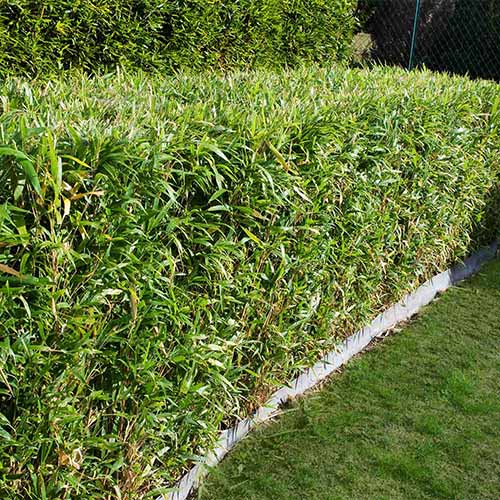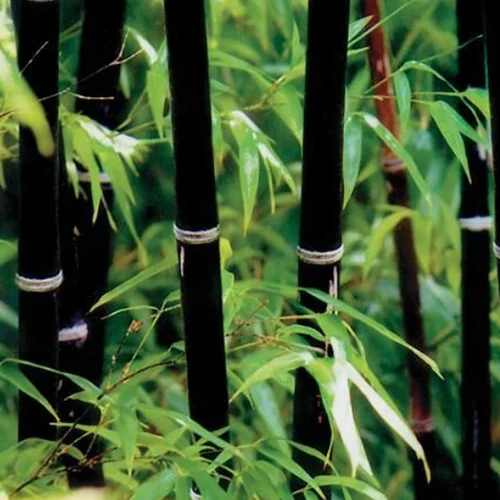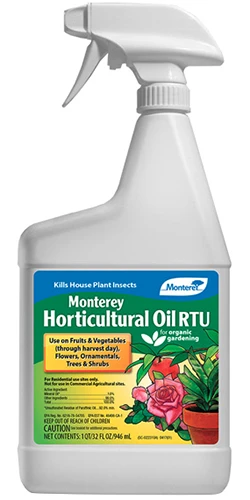Bambusoideae
If you could bring one plant with you to a deserted island, what would it be?
When I first considered this question some years back, I wasn’t sure. But now, my answer would definitely be bamboo.
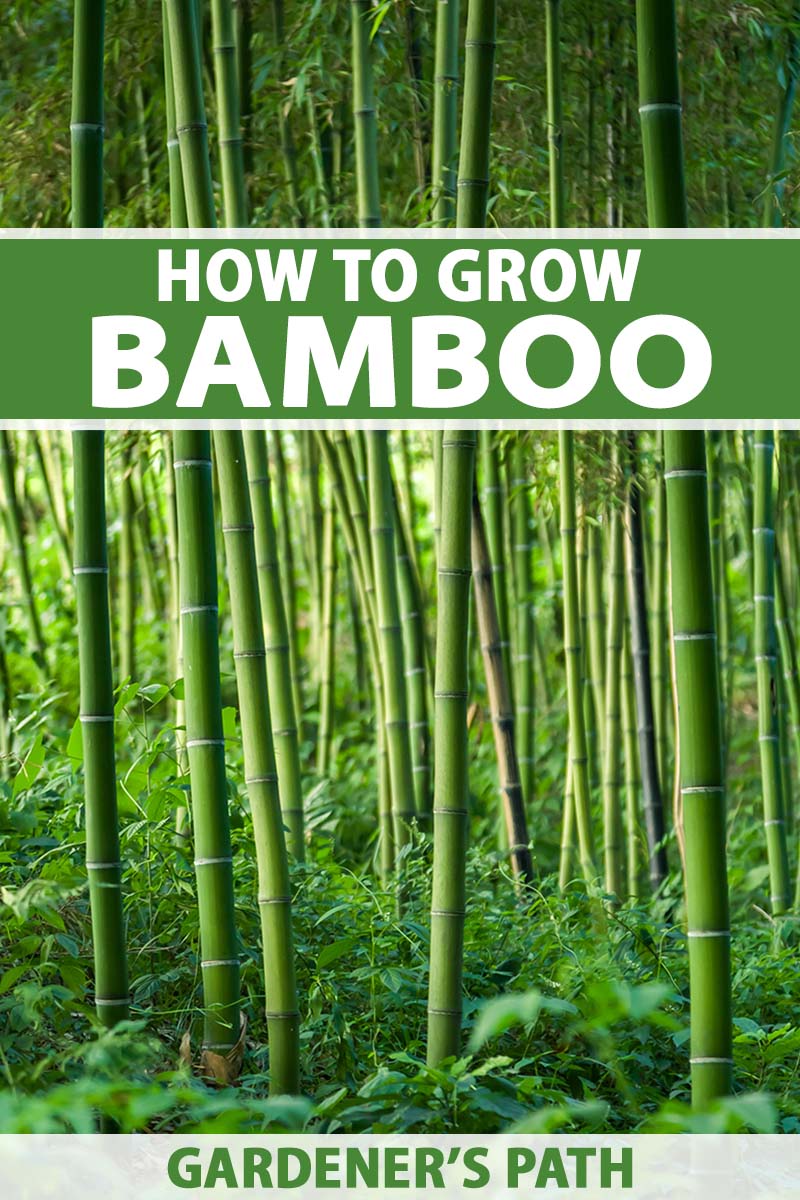
We link to vendors to help you find relevant products. If you buy from one of our links, we may earn a commission.
It’s freakishly fast-growing, edible, and can be used to build anything I might need to survive on the island.
A boat for deep-sea fishing, a super awesome treehouse, a bo staff for self-defense… As long as I have some healthy bamboo to work with, the possibilities are endless.
But even for those living in civilization with other humans, bamboo definitely has its merits.
Along with the aforementioned qualities, it provides ornamental beauty in a variety of landscape settings, whether in a large grove or as a single containerized specimen.
These plants take some specialized know-how to grow, and their vigorous spreading power requires the utmost responsibility on the part of the gardener to keep it in check.
If you feel up to the task, this guide will definitely come in handy.
Let’s begin!
What You’ll Learn
What Are Bamboo Plants?
For some of y’all, bamboo may be a plant that you know of, but that you don’t know much about.
Kinda like how I am with string theory, crème brûlée, or The Church of the Flying Spaghetti Monster. Sure, I recognize the reference, but I don’t quite understand it.
Unlike plants such as lucky bamboo and heavenly bamboo, true bamboos belong to the Bambusoideae subfamily of evergreen, woody-stemmed perennial grasses.
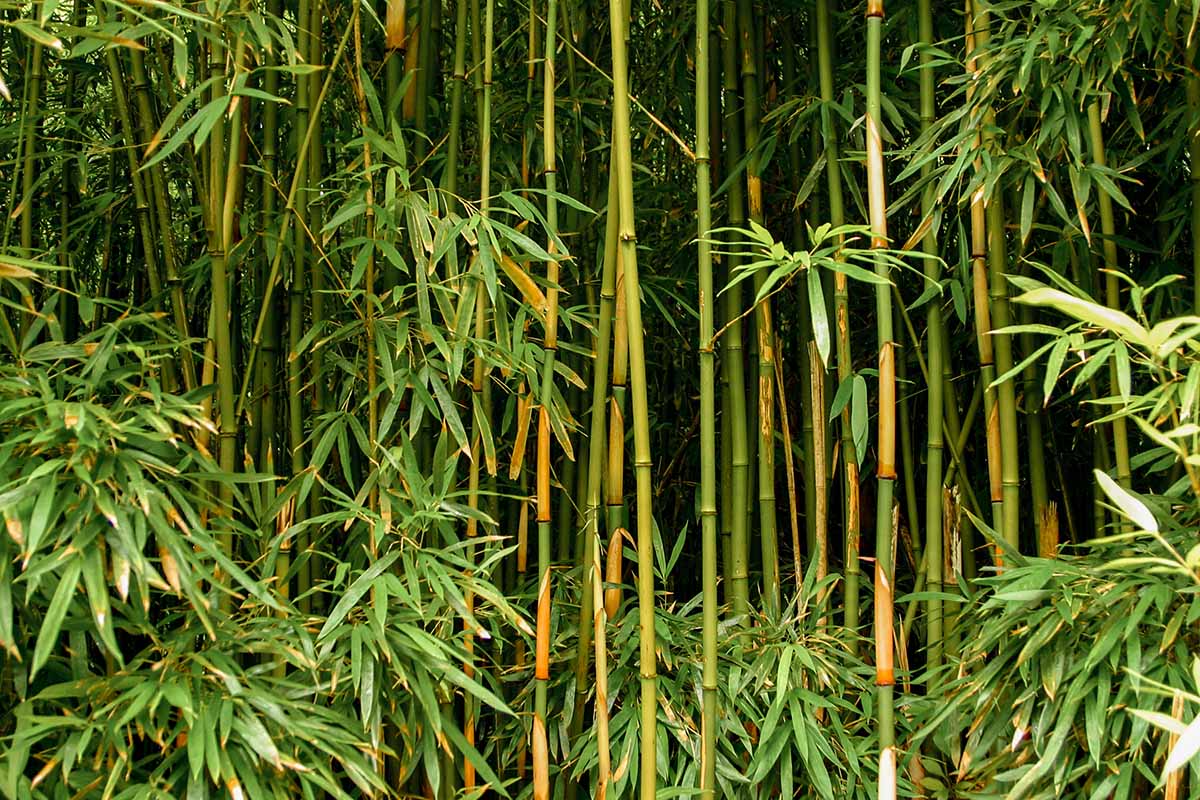
Containing over 100 genera and more than 1,400 species, this subfamily is huge.
And these plants can be big, too – collectively, the Bambusoideae are physically the largest members of the Poaceae, aka the grass family.
Hardy in an area ranging collectively from USDA Zones 4 to 11, species of bamboo are native to every continent except Europe and Antarctica.
They grow in all sorts of environments, from the warm and sunny tropics to temperate and snowy mountain ranges.
Members of the Bambusoideae flaunt hollow, woody, and ringed stems known as culms, which can sport a variety of colors across different species.
Depending on the species and maturity of the mother plant, individual culms can grow multiple feet within a single day, and typically reach their mature height within a single growing season.
That’s insanely fast growth you can almost see happening, no time-lapse required!
Juvenile culms grow skinny green leaves directly from culm rings, while more mature culms will usually sprout foliage from thin lateral branches. Foliage typically grows from the top half of the culms, leaving the lower woody growth exposed in an attractive, almost tree-like manner.
Over time, bamboo plants spread laterally via rhizomes, which put up new culms that are larger and thicker than the prior year’s growth. So while individual culms don’t really grow from year to year, the plant as a whole does.
The size of different species and cultivars varies. For instance, Pleioblastus distichus ‘Mini’ only reaches a foot in height, while species such as Dendrocalamus giganteus can grow over 100 feet tall!
As for their spread, bamboo plants can generally be classified as either clumping or running types.
Clumping types expand via thick pachymorph rhizomes, which only spread just a bit before putting out a new culm.
From a bird’s-eye view, clumpers end up with a circular and tightly-packed form, which tends to keep the plant somewhat within its intended planting site… at least compared to running types.
Running types put out thin leptomorph rhizomes, which can pretty much spread indefinitely before a culm emerges. As a result, runners can cover insanely large amounts of real estate – an entire grove of culms may be produced by a single specimen!
While ornamentally unimpressive, Bambusoideae flowering is rather interesting.
A few species flower annually, some bloom sporadically, but many flower gregariously, oftentimes after decades of purely vegetative growth.
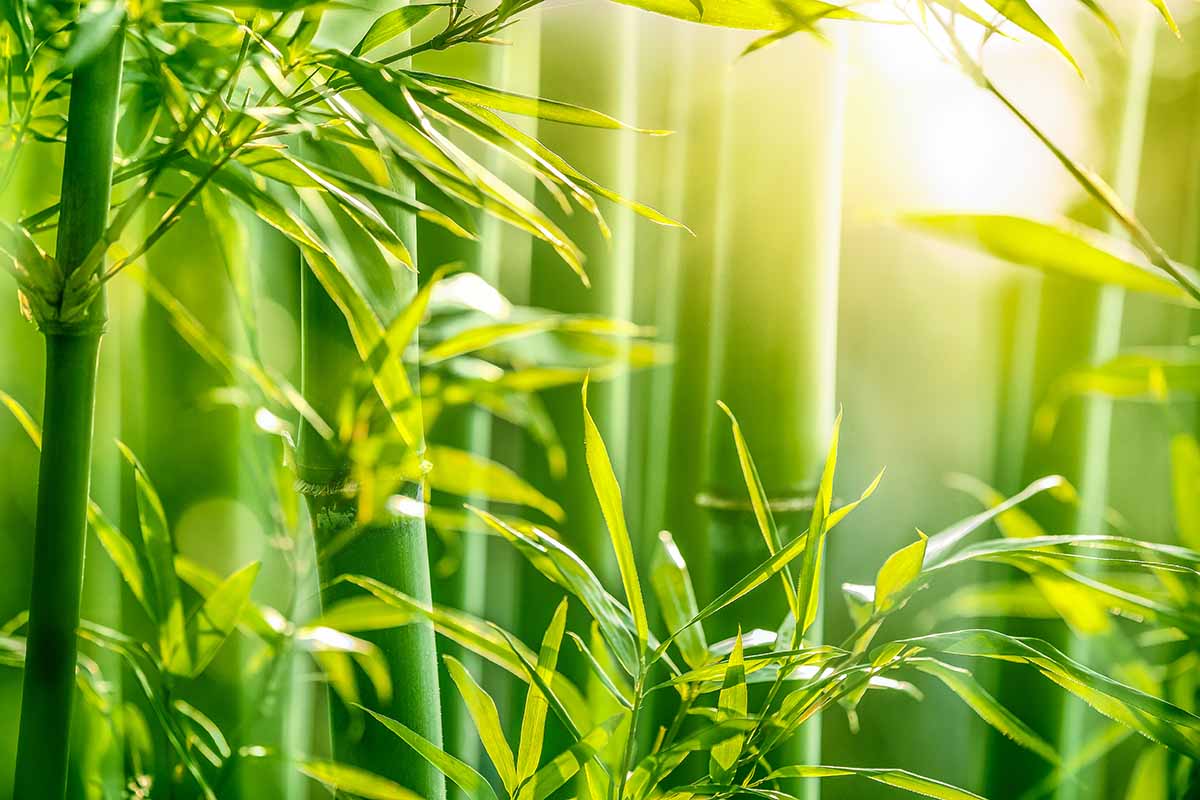
With gregarious flowering, individuals of the same species distributed over a large area all flower simultaneously. After a single bout of flowering, fruiting, and setting rice-like seeds, the life cycle ends, leaving the spent bamboo plants to die en masse.
But let’s get a bit controversial and briefly discuss bamboo’s invasiveness. Or “expansiveness,” as die-hard Bambusoideae enthusiasts may interject.
Some species – particularly running types – spread rather aggressively, to the point of overtaking gardens, native plants, and uncultivated land. Much like other invasives do, no?
But bamboo is unique in that its aggressiveness is pretty much entirely confined to its root system, rather than its seeds. In most species, seeds are set very infrequently and they aren’t easily spread, so keeping these plants in-bounds is purely a battle of gardener versus rhizome.
Not to say that you should ignore the rules. If your area has listed a particular species as a noxious weed banned from planting, then by all means obey the law. “But it’s purely vegetative expansion!” won’t exactly acquit you in court or anything.
When growing bamboo, you absolutely must manage the root system lest it spread, anger your neighbors, and cause ecological problems. We cover controlling bamboo more in a separate guide. (coming soon!)
Don’t get it twisted: controlling the roots can be a herculean task (and may require the use of a backhoe or excavator for removal — don’t say you weren’t warned). But if it’s allowed in your area and you’re responsible, then feel free to add some bamboo to your landscape, albeit with caution.
Growing it in a very strong masonry pot or container can be a good option if you just have to have some of the running type that can aggressively spread.
Cultivation and History
Bamboo has been used by humans for millennia: as early as 4,000 to 5,000 years ago, the plant was used in China to craft arrowheads. Ever since, these plants have been regarded as absolute botanical rock stars.
When it comes to versatile utility, few plants can rival bamboo.

Their lightweight and workable, yet super strong culms can be used as a flexible material for buildings, bridges, scaffolding, flooring, furniture, rafts, tools, weapons, crafts, musical instruments, biofuel, textiles, paper… I could go on forever.
These plants have a ridiculous amount of applications.
As a result, the growth, harvesting, trade, and utilization of Bambusoideae is a billion-dollar global industry. It provides job opportunities, positively impacts economies, and is a very affordable plant to grow and put to various uses.
Bamboo is a vital part of Asian cultures, most notably in China.
A symbol of traditional Chinese values such as honor, resolve, chastity, and modesty, these plants are depicted in many Chinese works of art and literature.
In both the past and the present, bamboo plays a large role in the daily lives of Chinese people.
Bamboo shoots are very nutritious, providing high amounts of fiber and essential nutrients.
You probably knew about pandas eating bamboo, but other animals such as mountain gorillas, African golden monkeys, and bamboo lemurs consume it as well.
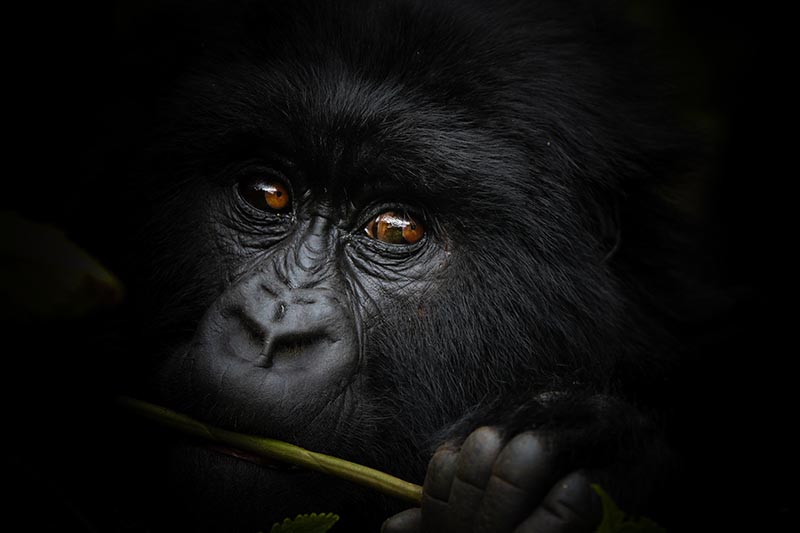
Bamboo can be dried and ground into flour that’s used to make pasta and bread, or the shoots may be cooked and eaten as a vegetable. It’s even been used medicinally in treatments for diabetes and high cholesterol.
Bamboo is an excellent plant for the planet, as its fast growth rate allows it to take up large amounts of carbon dioxide while producing a ton of oxygen, acting as a carbon sink.
It can utilize wastewater, control erosion, detoxify soil, and improve soil structure. It breaks down easily and is biodegradable, making it a very “green” material for construction.
Ornamentally, the plant is used to establish beautiful scenery for ecotourism and in landscapes the world over. And who knows? Maybe it could end up in yours!
Bamboo Plant Propagation
While it’s possible to grow bamboo from seed, I wouldn’t recommend it for the average home gardener. Seed set is infrequent, and many seeds that are produced are not viable.
Propagation-wise, your best bets are taking culm cuttings, rhizome cuttings, or divisions, or transplanting a potted specimen from a nursery or plant swap.
From Culm Cuttings
Taking cuttings from culms only works with clumping types. If you have runners, taking rhizome cuttings should be your go-to method.
The best time to take culm cuttings is just before your species shoots out in spring. Choose culms that are neither too young or too old: two to three years of age is perfect.
With a sterilized and small-toothed saw, cut the culms flat just above the ground and about an inch above a node.
Trim away their lateral leafing branches just above their first nodes, and place the cut ends in water if you can’t complete the next steps right away.
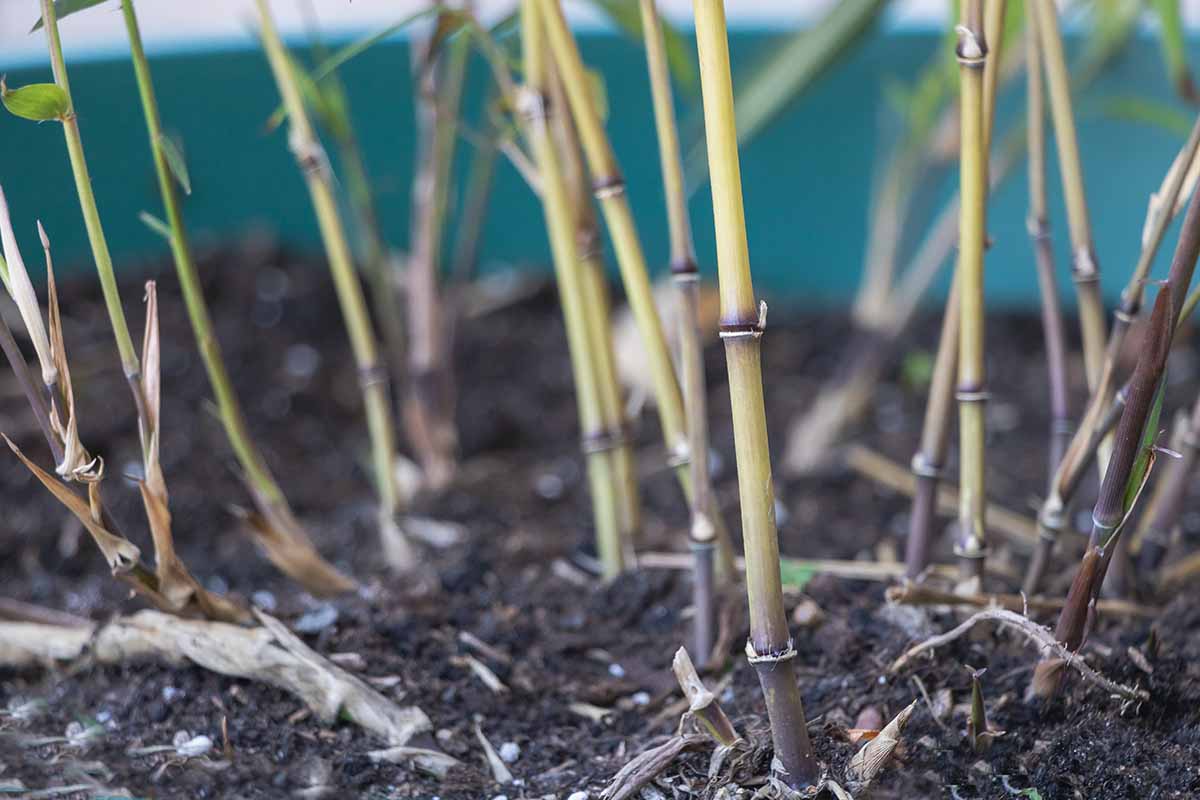
Lay a culm cutting flat on its side, choose a node with a trimmed leafing branch, and cut the culm about three inches away on either side. This leaves you with about a six-inch-long culm cutting, with a trimmed leaf branch in the middle.
Repeat with your harvested culms until you have all the prepped cuttings that you desire, and continue to keep the cut ends in water until you’re ready for the next steps.
For every three cuttings you plan to propagate, loosely fill a gallon-size pot with a 50:50 mix of peat moss and perlite.
Stick the cuttings in vertically, deep enough to cover the nodes. Space them close to the container’s edges, and equidistant from each other.
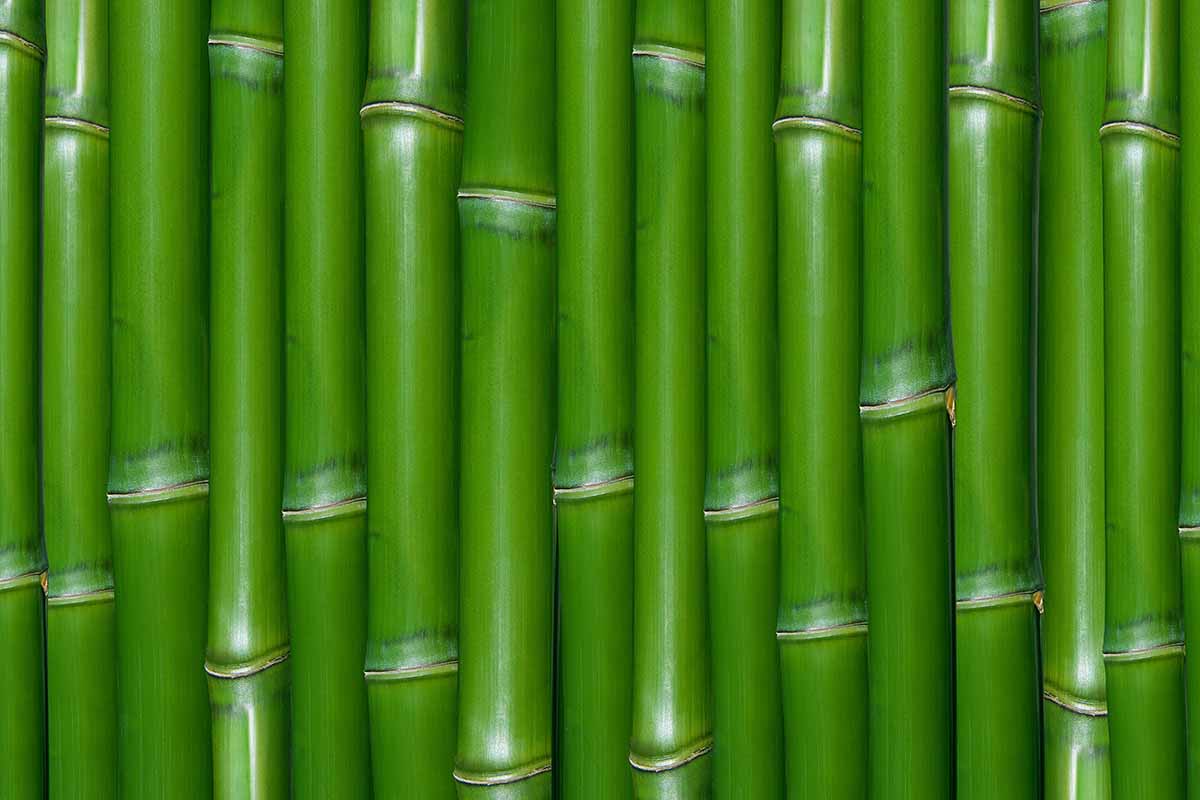
Orient the cuttings so the leafing branches are all facing the center of the container. It’s alright if the branches aren’t entirely covered with potting mix.
Water in your cuttings, and keep the containers outdoors in full sun to partial shade, depending on the species.
Keep the media moist as the cuttings grow – new growth should appear in as little as six weeks. Be sure to re-pot the cuttings into larger containers if they become overcrowded.
Come fall, your cuttings should be ready to transplant!
From Rhizome Cuttings
If you’re trying to propagate a running type, then rhizome cuttings are the way to go.
Just like with culm cuttings, you’ll want to gather rhizome cuttings a bit before your particular species shoots out in spring. Towards the outer edge of a grove, select a two- to three- year-old culm, and gently loosen the soil around it to locate its rhizome.
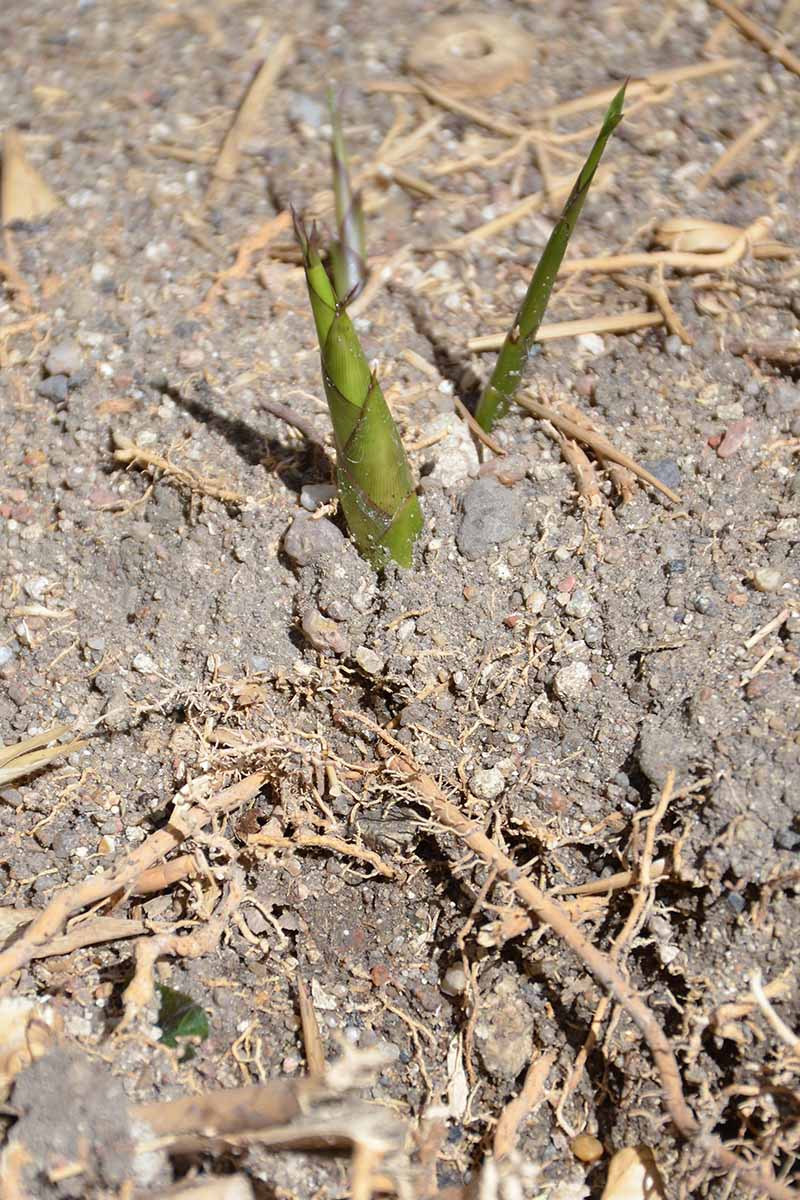
Select a vigorous, brightly-colored stretch of rhizome and carefully sever it from the mother plant. Carefully uplift and sever about 12 to 14 inches of rhizome for every cutting you intend to propagate, ensuring that each section sports at least two healthy buds.
Keep the rhizomes moist until you’re ready to plant them. Prepare trenches of well-draining soil outdoors and plant the rhizomes horizontally two to four inches deep. Pat the soil down.
Water in the rhizomes, and keep the soil moist. Growth should occur in about four to six weeks.
Via Divisions
For containerized bamboo, dividing is the perfect propagation method.
Spread a tarp on the ground or your work surface. Prior to shooting out in spring, remove your specimen from its pot. You may have to cut said pot in order to do so, if it’s made of plastic.
Place your bamboo on the tarp, and brush away any loose soil from the rhizomes to see what you’re working with. With a sharp spade or saw, cut your specimen into two to four pieces, depending on size and the number of divisions you wish to have.
Make your cuts in between the culms at the rhizome, and do your best to avoid unnecessary root damage. Some damage will be inevitable in root-bound specimens.
Each division can be transplanted immediately into its new home, whether it’s another container or the ground!
Via Transplanting
Bamboo can really be transplanted at any time, save for during heavy frosts and freezes, or any time when the ground is frozen.
Optimally, you want to transplant after the last frost in spring but before the first frost in fall.
Transplanting bamboo is pretty simple. In your species’ preferred exposure, prepare well-draining and fertile transplant sites with a pH of 6.0 to 7.0.
Planting about three to five feet apart is ideal for a screen, but you can space them even further to emphasize each individual specimen.
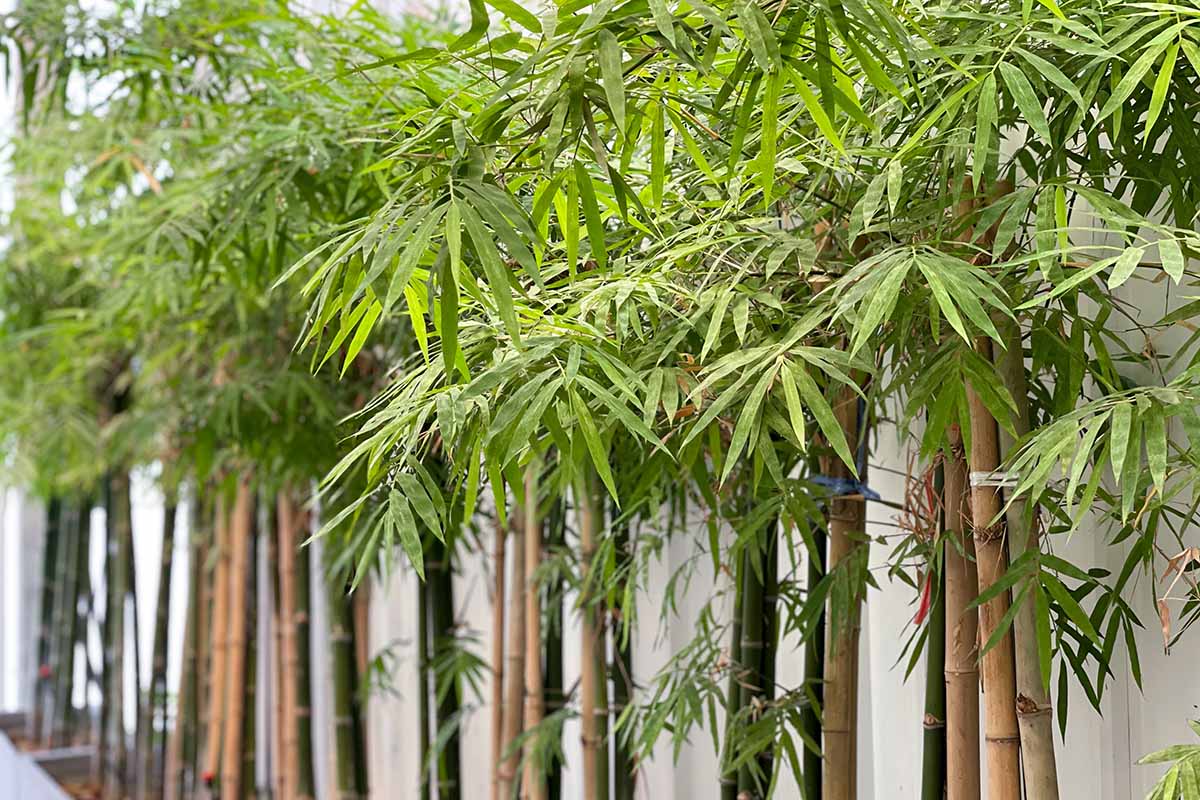
Dig holes about as deep as and a bit wider than the transplants’ root systems. Lower the transplants in, fill the holes with adjacent soil, and water them in.
Make sure to keep the soil moist as they get established!
Depending on wind exposure and planting location, transplants over 15 feet tall at planting time may require staking or guying in their first year or so of growth until the roots establish and anchor the plant.
Find more tips on dividing and transplanting bamboo here.
How to Grow Bamboo Plants
Since this group includes a vast number of species, the following recommendations are intentionally general.
When growing a certain variety of bamboo, it’s important to conduct some species-specific research.

Bamboo grows pretty much all over, and these plants span USDA Hardiness Zones 4 to 11.
Save for the hottest heat or the most frigid cold, your local growing environment can probably sustain at least one kind of Bambusoideae!
In general, bamboo does well with full sun exposure, but some species actually prefer partial sun, or even partial shade.

Bamboo prefers loamy soil that drains well, is amply fertile, and has a pH of 6.0 to 7.0. But as long as the drainage is adequate, other soil textures will also do the trick.
Some species can handle overwatering or underwatering better than others. But overall, bamboo grows optimally in soils that are kept moist, but not saturated.
This means deeply watering whenever the top inch of the soil feels dry, and definitely whenever leaf edges start to curl.
Fertilizer-wise, most bamboos benefit from an application in both spring and summer. As grasses, these plants will really make good use of high nitrogen fertilizers.

Most fertilizers formulated for turf will get the job done. Try this 50-pound bag of slow-release 15-9-12 NPK fertilizer from Osmocote, available on Amazon.
Growing Tips
- Full sun is optimal for most species, while some like a bit of shade.
- Provide well-draining, fertile, loamy soil with a pH of 6.0 to 7.0.
- Irrigate whenever the top inch of soil dries out.
Pruning and Maintenance
Maintaining two to three inches of mulch around your plants will help with protection, insulation, and moisture conservation.
Leave healthy fallen foliage on the ground for some free mulch and organic matter, on the house!
For health and aesthetics, it’s important to get rid of old culms by cutting them down at the soil line.
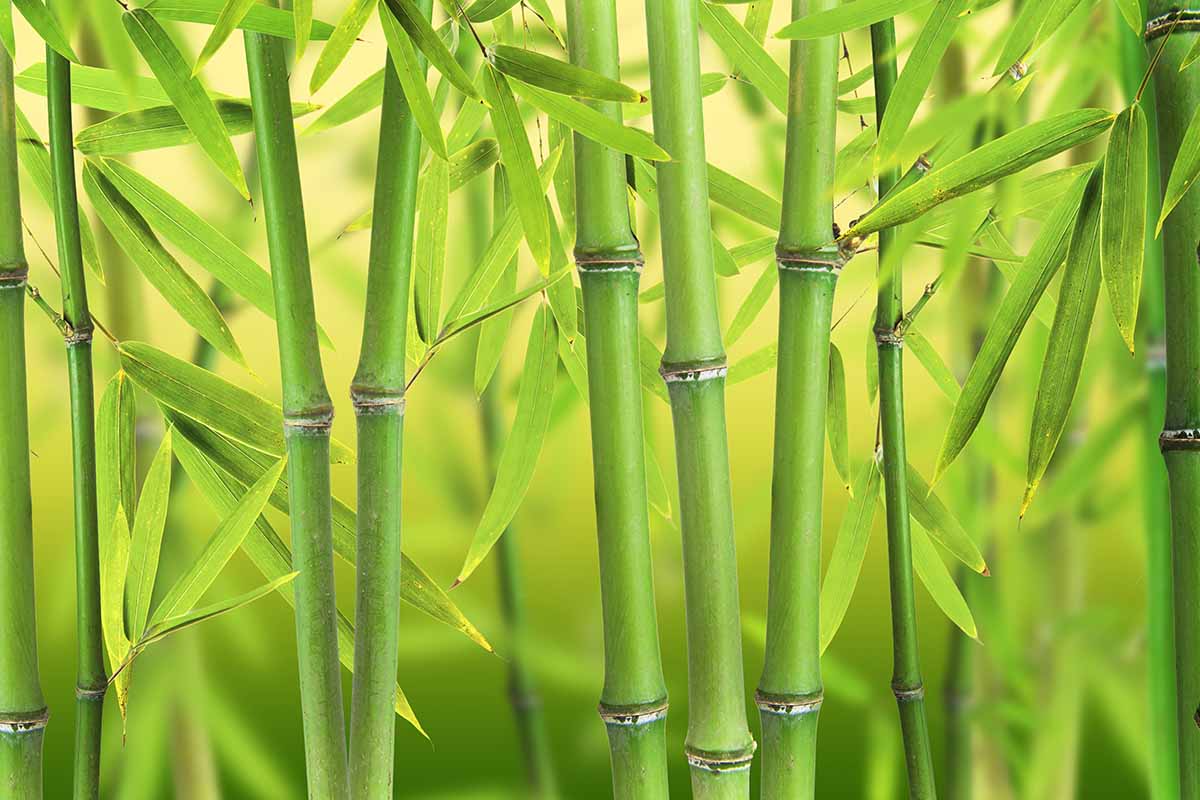
Dead, damaged, and/or diseased culms should definitely be pruned whenever you notice them, while five- to seven-year-old culms can be removed prior to plants shooting out in spring for a more open appearance and improved airflow.
Running bamboo will need to be controlled and contained at all costs, and you have a few options for doing so.
You can install a root barrier by digging a three-foot trench around the border of your plantings, and then installing a 60-millimeter high density polyethylene barrier.
Arrange it so the polyethylene sticks out of the soil a few inches, since rhizomes aren’t shy about going over as well as under obstructions.
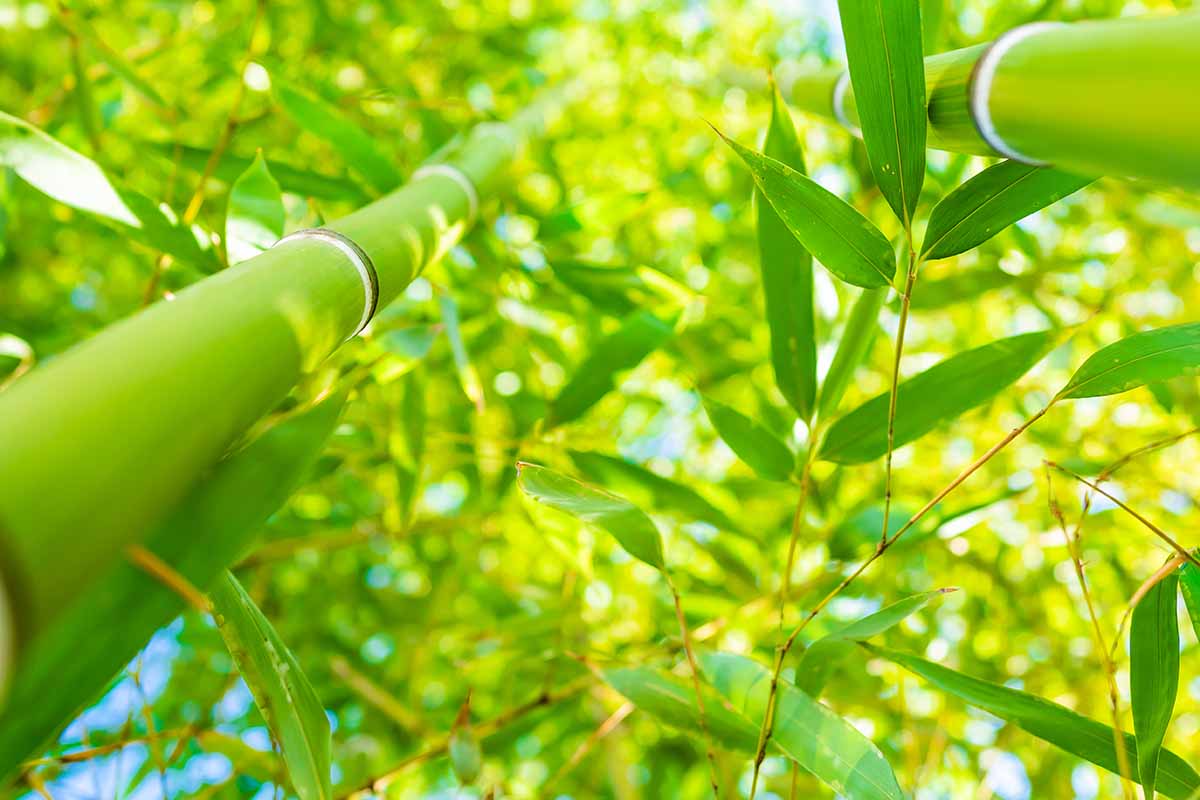
You could also dig a trench around the perimeter of the planting area that’s about a foot or two deep and wide.
This allows you to easily observe and prune any rhizomes before they grow out of bounds. If you don’t want a gaping trench in your yard, you can fill it with loose material such as straw or sand that’s easy to move for root observation.
Should your bamboo make a break for it, swiftly sever the invasive growth’s roots from the rest of the plant by establishing a new trench, or by recutting the roots in an existing one.
Keep cutting down the culms of the unwanted colony until their belowground rhizomes run out of energy and perish – this may need to be done over the course of a couple of seasons.
Bamboo Species and Cultivars to Select
With so many species to choose from, almost every gardener can find some Bambusoideae that’s suitable for their landscape.
Here are three of my favorites:
Bambusa Multiplex
A clumper that hails from Asia, Bambusa multiplex exhibits thin, densely-packed, gracefully arching culms.
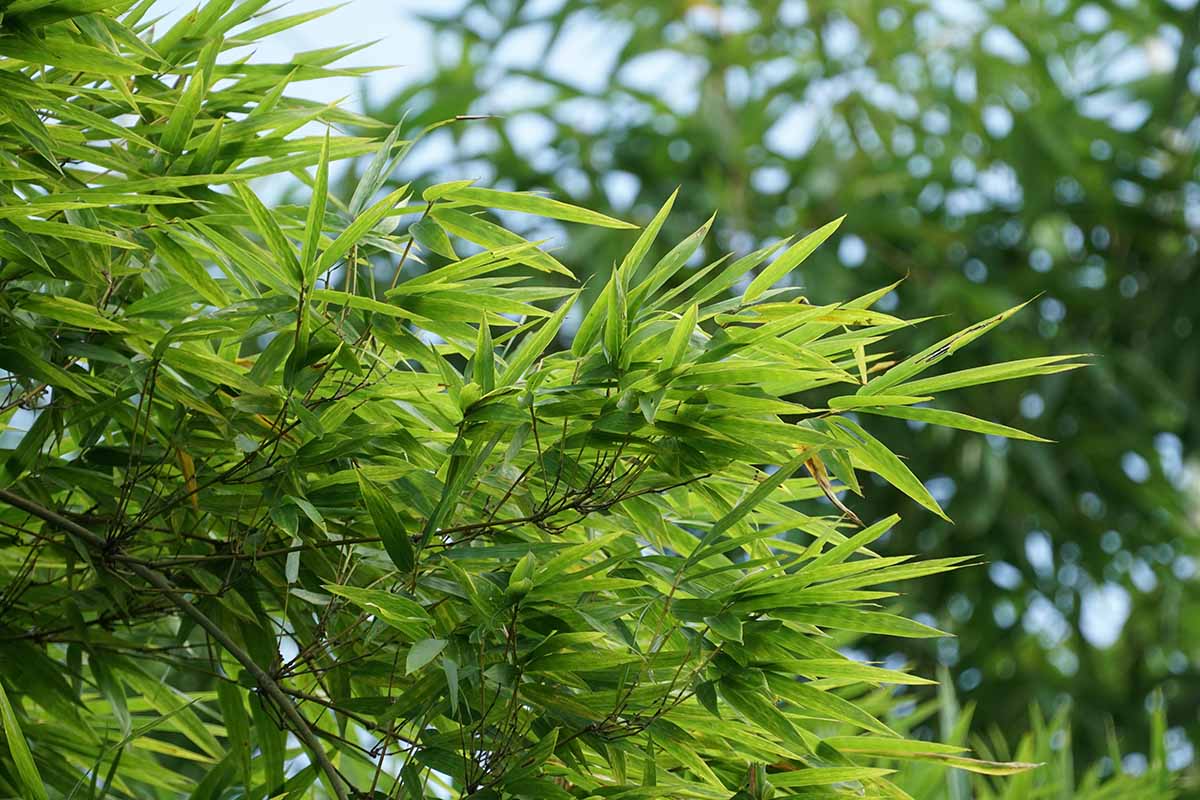
Reaching a height of 25 feet with a spread of six feet, this species is hardy in Zones 6 to 9, can tolerate full sun to partial shade, and is moderately salt tolerant.
B. multiplex offers many different cultivars to choose from: ‘Alphonso Karr’ flaunts yellow and green-striped culms, ‘Silverstripe’ produces leaves striped in different shades of green, and ‘Willowy’ is a gracefully-arching variety with particularly fine foliage.
‘Alphonso Karr’ is available for purchase from FastGrowingTrees.com.
Bambusa Oldhammi
For those more interested in building with bamboo than showing it off, you can count on Bambusa oldhammi to provide material for your projects!
Native to China and Taiwan and hardy in Zones 8 to 11, Oldham’s bamboo is a clumper that can grow over 50 feet tall when properly cared for.
The pale green culms grow very straight and are about three to four inches thick, making them a perfect medium for craftspeople.
Long, broad leaves grow densely between the culms, which can result in an effective, albeit narrow, screen, windbreak, and/or shade planting.
Large landscapes would make good use of a stand or colony of them!
Phyllostachys Nigra
Also known as black bamboo, Phyllostachys nigra has a very noticeable feature: black culms.
The fresh green culms of this Chinese-native running type will turn black within a year of their emergence, which contrasts beautifully with the green foliage.
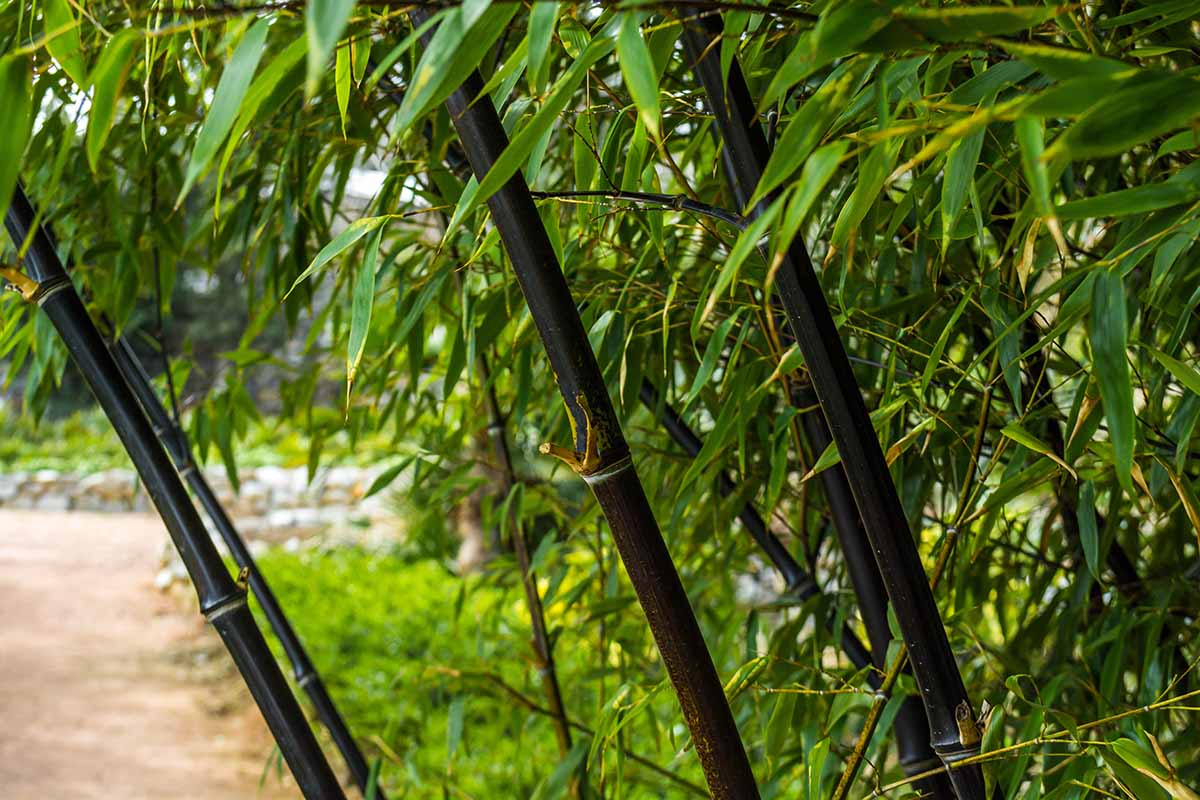
Hardy in Zones 6 to 10, P. nigra can reach a mature height of 30 feet, and can pretty much spread as far as it has the room to.
It wields pest, disease, and deer resistance, along with drought tolerance.
‘Henon’ is an unusual, yet stunning cultivar with large, rough, whitish-green culms that can grow to be 65 feet tall at maturity.
To purchase a standard black bamboo plant, check out Planting Tree or FastGrowingTrees.com.
Managing Pests and Disease
To keep your specimens looking sharp, it’s important to protect them from things that could eat, infest, or infect them.
Herbivores
I’ve already mentioned a laundry list of animals that consume bamboo, such as pandas and mountain gorillas.
But unless you live in a zoo, your biggest mammalian threats will most likely be deer and rabbits.

Your adult culms should be safe – the young shoots are the most at risk.
If you really want to tighten security, some wire mesh or chicken wire positioned around each planting should keep rabbits at bay during the culms’ juvenile period.
Deer are best kept out of your landscape with deer fencing.
Insects
Insects have a nasty tendency to vector pathogens, so warding off bugs can also protect against diseases!
Aphids
Native to eastern Asia, bamboo aphids belong to the Takecallis genus. They sport rather long, dark brown antennae and have soft, green, narrow bodies.
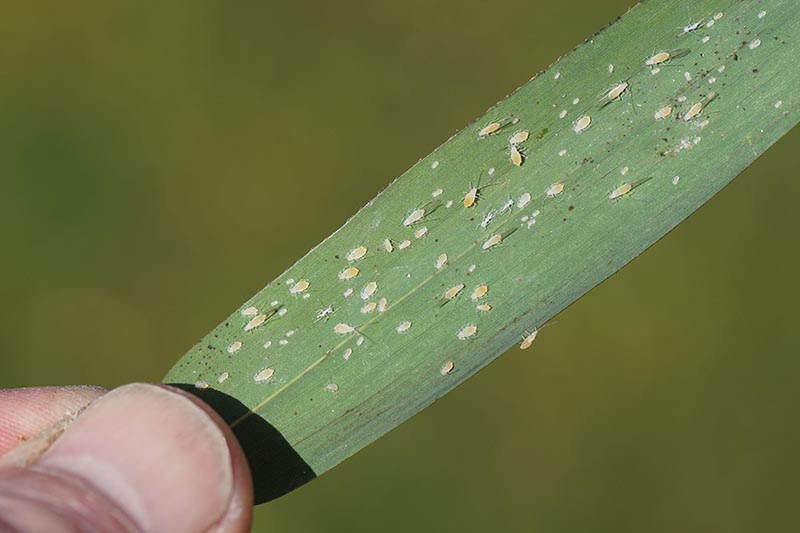
Commonly found on and under leaves, these pests feed on foliage with their piercing-sucking mouthparts, which can lead to minor symptoms of chlorosis and stunted growth.
Additionally, aphids will excrete honeydew, which attracts other insects and can lead to black sooty mold.
Strong sprays of water will physically knock these pests off of plants, while sprays of insecticidal soap and/or horticultural oil on the foliage will smother them.
For horticultural oil in a ready to use spray bottle or concentrated form, check out Arbico Organics.
Mealybugs
Palmicultor lumpurensis is a Malaysian-native mealybug that’s grayish-pink and covered with a fine, white, waxy coating.
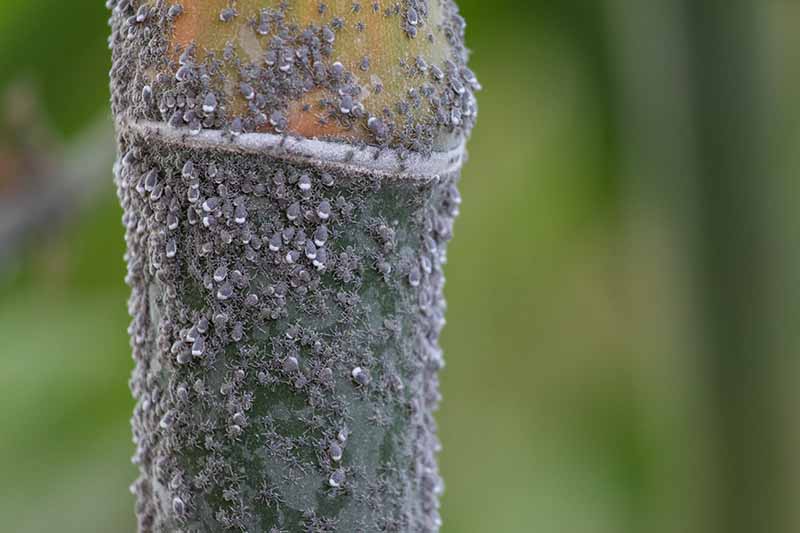
Infested shoots can become weak and sickly looking, and they may be dotted with cottony webbing.
Bamboo mealybugs can cause considerable damage, especially in new shoots, and large enough populations can kill an entire plant.
Just like with aphids, P. lumpurensis and other mealybug species can be controlled with sprays of insecticidal soap or horticultural oil.
Additionally, the introduction of natural predators such as ladybugs can help keep mealybug populations down.
Scale
An armored scale species, Kuwanaspis pseudoleucaspis is among the most notable species of the pests known commonly as bamboo scale.
These are long, oyster-shaped pests – especially under their waxy covering – and large colonies of them can collect under culm and branch sheaths.
Sucking sap from infested surfaces, these pests can cause minor aesthetic and health problems for a specimen.
Horticultural oil can help, along with pyrethroid insecticides. But many gardeners do nothing in the case of minor infestations, opting to see whether the problem revolves on its own.
Spider Mites
A major affliction of bamboo in the Western world, the miniscule members of the Stigmaeopsis genus, aka bamboo spider mites, leave rounded white patches along the midrib and edges of leaves, severely reducing foliar aesthetics and health.
Bamboo spider mites can spread super easily and they are protected by their webbing. Spraying the leaves regularly with miticides or forceful jets of water should help to combat an infestation.
For those who grow bamboo for their livelihood, the only guaranteed way to eliminate these pests is with a “scorched earth” policy – removing all infested aboveground growth and burning it.
This might be worth it in the long run for keeping yields healthy and attractive, but it probably won’t be necessary for casual gardeners.
For prevention, be careful about whom you get your plants from, as pests may be carried home easily from the nursery!
Learn more about spider mites and how to control them here.
Disease
As a bamboo plant parent, you’ll be hacking at culms with blades a lot. Therefore, it’s important to use sanitized tools – and soils, for that matter – to prevent disease spread.
Bamboo Mosaic Virus
Thankfully, no insect vectors are known to transmit bamboo mosaic virus, aka BaMV.

Primarily spread through mechanical means such as infected tools, the disease causes mosaic patterns of chlorosis along the leaf veins, necrotic streaks along culms, reduced vigor, aborted culms, and even the eventual death of plants.
There’s no known cure, so your only hope of halting the spread of this disease is to remove and destroy infected plants. Prevention-wise, only use clean tools and disease-free plant stock.
Leaf Spot
Caused by various pathogens such as species of Cyphellophora fungi and Pseudomonas bacteria, leaf spots exhibit themselves as rounded patches of foliar necrosis, which can grow in size as the condition progresses.
Along with looking ugly, leaf spots interfere with photosynthesis.
To manage this disease, prune infected leaves when you notice them. But to avoid the problem from the get-go, make sure to provide decent airflow and avoid sprinkler irrigation.
Stay on top of your culm pruning, too!
Root Rot
Whether the cause is Armillaria fungi or just excess water, root rot is bad news.
When the roots are necrotic and rotted out, the aboveground shoots will follow suit with weakness, wilting, and death, which isn’t a look you want for your landscape.
Infected plants should be pitched and destroyed. Too much irrigation can choke out roots and create an ideal environment for pathogens, so don’t provide excess water!
Best Uses for Bamboo Plants
In the landscape, bamboo is as versatile as it is gorgeous.
Running types work great for screens, hedges, and groves, while clumping types perform well as specimens, accents, and even container plantings!
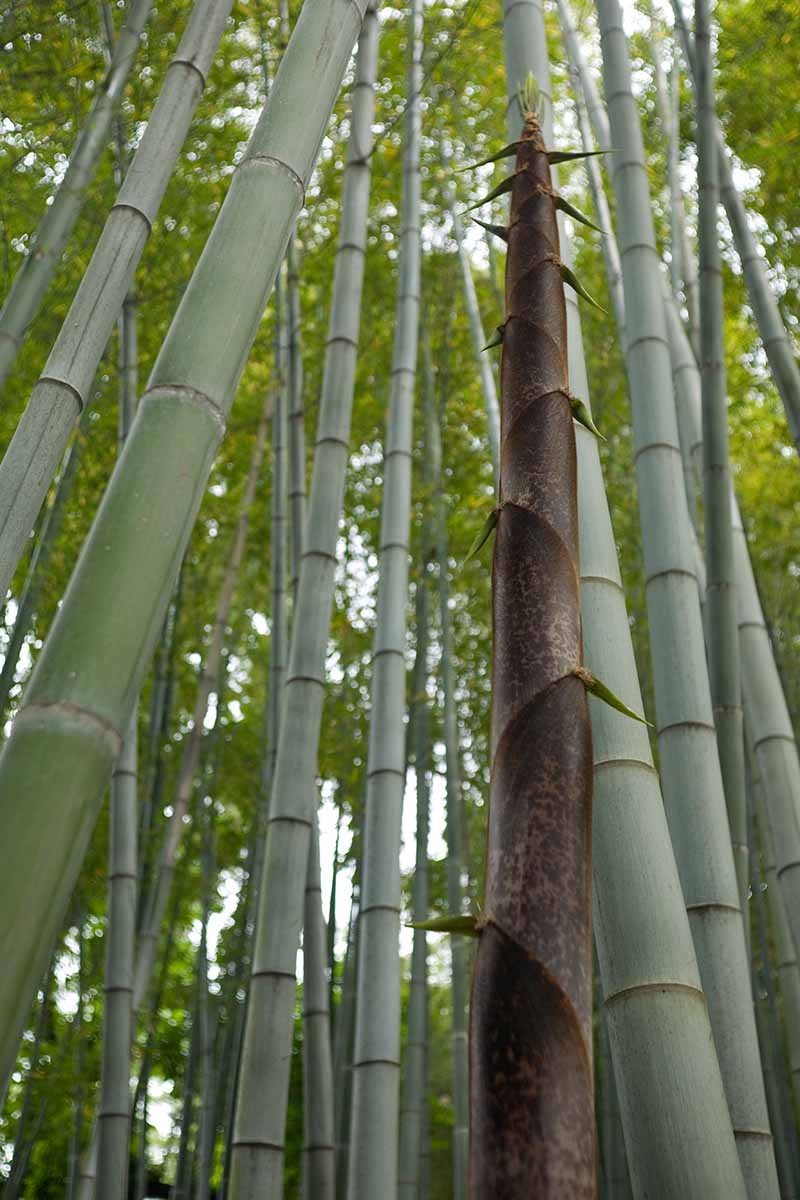
These plants convey the perfect aesthetic for zen gardens, compliment water features, provide shade, and act as a windbreak.
For those who like outdoor meditation, yoga, or tai chi, a bamboo backdrop can really add to your practice.
Quick Reference Growing Guide
| Plant Type: | Woody perennial evergreen grass | Flower/Foliage Color: | Green, pink, purple, red, tan, white, yellow/green |
| Native to: | Africa, Asia, Australia, North America, South America | Water Needs: | Moderate |
| Hardiness (USDA Zones): | 4-11, depending on species | Maintenance: | Moderate |
| Bloom Time/Season: | Varying bloom seasons and cycles | Tolerance: | Clay soils, cold, heat, moderate drought and flooding, salt (all depending on species) |
| Exposure: | Full sun to partial shade | Soil Type: | Fertile loam |
| Time to Maturity: | 1 season (individual culms), 5-10 years (mature height) | Soil pH: | 6.0-7.0 |
| Spacing: | 3-5 feet apart (screen), 5-20 feet (individual emphasis) | Soil Drainage: | Well-draining |
| Planting Depth: | Ground level or slightly below the soil line | Attracts: | Deer, rabbits |
| Height: | 4 inches-130 feet | Uses: | Accents, construction and gardening materials, container plantings, groves, screens, specimens |
| Spread: | Up to 50 feet (clumpers), indefinite (runners) | Family: | Poaceae |
| Growth Rate: | Extremely fast | Subfamily: | Bambusoideae |
| Common Pests and Diseases: | Bamboo aphids, bamboo mealybugs, bamboo scale, bamboo spider mites; bamboo mosaic virus, leaf spot, root rot | Genera: | Arundinaria, Bambusa, Dendrocalamus, Fargesia, Guadua, Himalayacalamus, Phyllostachys, Pleioblastus, Sasa |
Go Accrue Some Bamboo!
As long as you’re willing to put in the work to care for and control it, bamboo can make a lovely addition to the landscape or patio garden.
Otherwise, you may have the Homeowner’s Association on your back, or perhaps some angry ecologists.
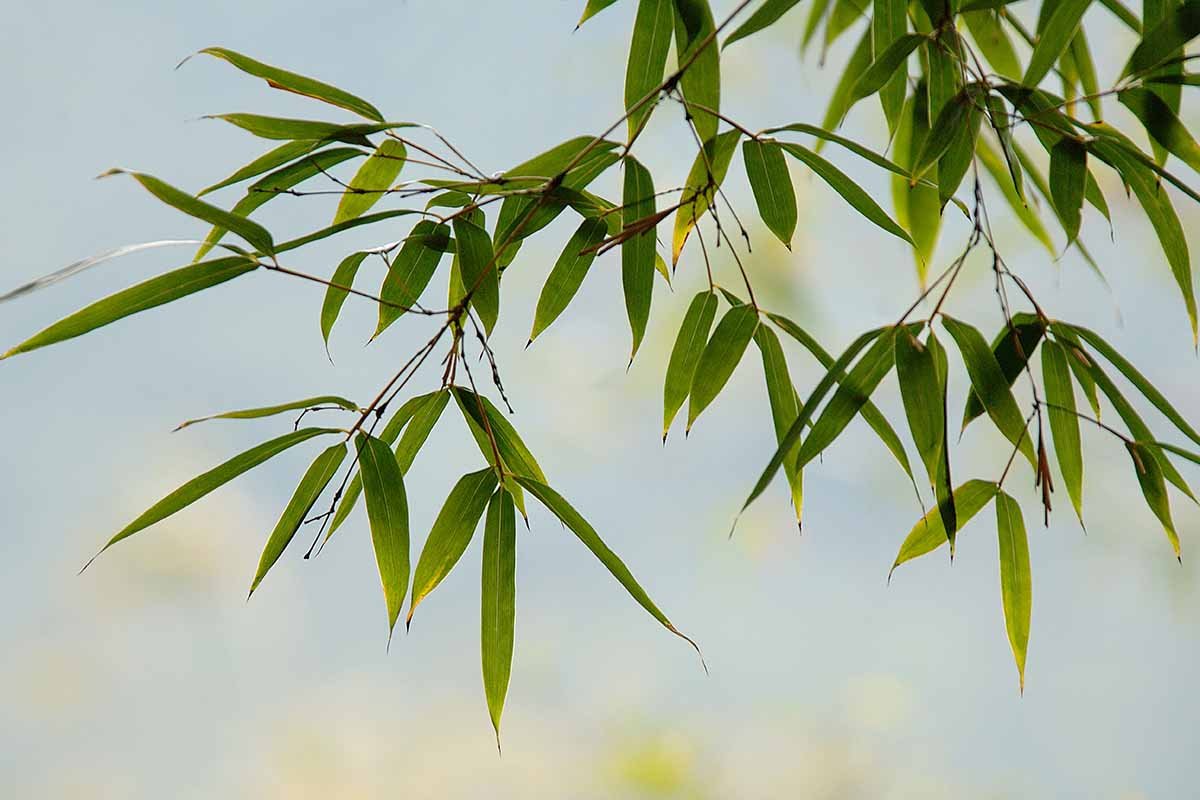
Now that you’re able to grow and care for these plants, all that’s left to learn is the specifics of the kind you want to cultivate. With so many species out there, have fun choosing the best variety for you and your garden!
Questions or remarks to share? Head on down to the comments section below and let your fingers do the talking!
Has the grass family piqued your interest? Read these grassy guides next:
